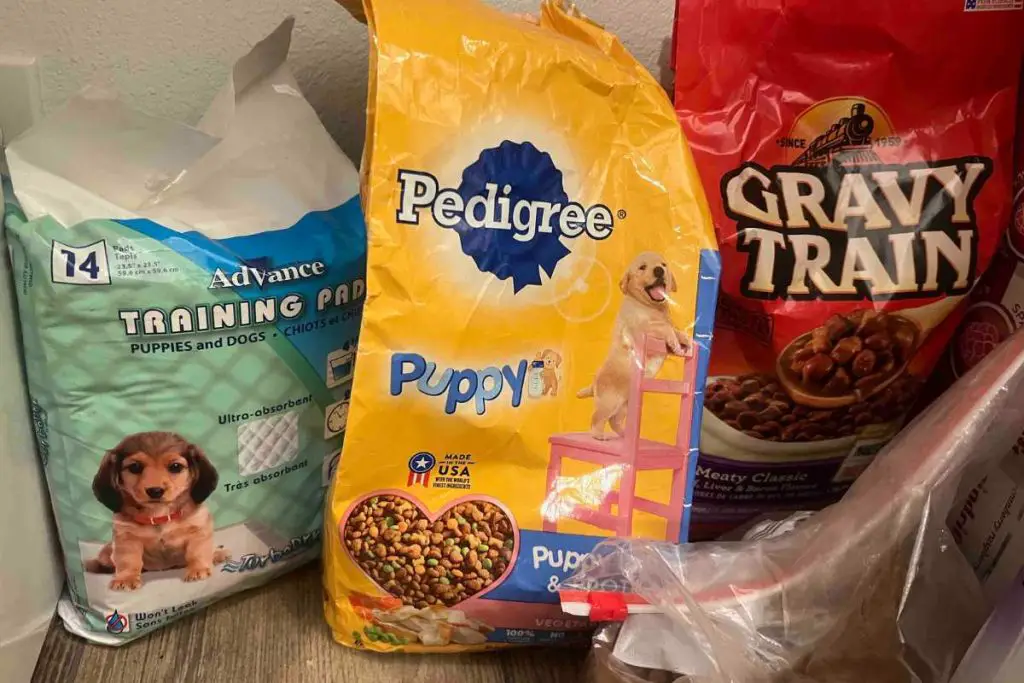Let’s be honest; we all love our pets. They bring us joy, comfort, and unconditional love. Unfortunately, not everyone can afford to provide their furry (or scaly) friends with the food they need to stay healthy and happy. This is where pet food pantries come in!
A pet food pantry is a place where people in need can go to get free or low-cost pet food. Pet food pantries are usually run by volunteers and donations from the community.
If you’re interested in starting a pet food pantry in your community, read on for seven steps on how to get started!

Pet Food Pantries: At a Glance
Before we get into the nitty-gritty of starting a pet food pantry, let’s take a quick look at what they are and what they do.
Pet food pantries are nonprofit organizations that collect and distribute pet food to people in need. These can either be run out of a physical location, like a church or community center, or they can be mobile pantries that make regular stops at different locations.
Pent food pantries usually rely on donations from individuals, businesses, and pet food companies. Some pantries also accept government assistance programs, like the Supplemental Nutrition Assistance Program (SNAP).
7 Steps to Starting a Pet Food Pantry
Starting a pet food pantry can seem daunting, but it’s definitely doable with some planning and hard work. Follow these 7 steps, and you’ll be on your way to helping pets and their families in no time!
1. Do Your Research
This may seem like an obvious first step, but many people assume they know everything there is to know about pet food pantries and set out to start their own without doing any research.
Starting a pet food pantry is a big undertaking, so it’s important to be as prepared as possible.
Do a quick Google search and see what pet food pantries are already in your area. What services do they offer? How are they run? Do they have any tips or advice for starting your own pet food pantry?
It’s also important to research the different types of pet food that are available. There are many different brands and formulas of pet food, so you’ll want to make sure you’re stocking your pantry with food that is nutritious and safe for pets.
2. Come Up With a Plan
Now that you’ve done your research, it’s time to start putting together a plan for your pet food pantry.
Your plan should define your goals and objectives for starting the pantry, as well as what services you plan to offer and how you’ll fund your operation.
It’s also a good idea to include a board of directors or advisors in your planning process. These people can help you with the logistics of starting and running a pet food pantry, as well as offer advice and support along the way.
Your board of directors or advisors doesn’t have to be large or even highly organized. Just having a few people you can bounce ideas off of and who are willing to help out when needed can be a big help.

3. Choose a Location
Choosing the right location is one of the most important decisions you’ll make when starting a pet food pantry.
Your pantry should be easily accessible to people in need, so a spot in a high-traffic area like a grocery store or pet store is ideal.
You’ll also want to ensure your chosen location has enough space to accommodate the amount of pet food you plan to stock and any other supplies you may need, like leashes, bowls, and toys.
A mobile pet food pantry is another option to consider. This type of pantry brings pet food directly to people in need, which can be especially helpful for those who have trouble getting to a physical location.
If you choose to go the mobile route, you’ll need a reliable vehicle and someone willing to drive it regularly.
4. File for Incorporation and 501(c)(3) Status
In order to operate as a pet food pantry, you’ll need to file for incorporation and 501(c)(3) status with the IRS.
Filing for incorporation will make your pet food pantry a formal business entity, which will provide some legal protection for you and your board of directors or advisors.
501(c)(3) status will allow your pet food pantry to operate as a nonprofit organization and accept tax-deductible donations.
The process for filing for incorporation and 501(c)(3) status can be confusing, so it’s a good idea to have an attorney or accountant help you with the paperwork.
5. Develop Fundraising Strategies
Running a pet food pantry can be expensive, so it’s important to have a solid fundraising plan in place.
There are many different ways to raise money for your pet food pantry, so you’ll need to get creative and think outside the box.
Consider hosting a fundraiser event, like a bake sale or car wash. You could also apply for grants or start a crowdfunding campaign.
Donations from individuals and businesses are another great way to raise money for your pet food pantry. Be sure to reach out to your local community and let them know what you’re doing and how they can help.
6. Stock Your Shelves
Once you have a location and the necessary funding in place, it’s time to start stocking your pet food pantry.
There are many different ways to get pet food for your pantry, so you’ll need to do some research to find the best option for your specific needs.
You could contact local pet stores or animal shelters and see if they’re willing to donate food. You could also purchase food directly from pet food manufacturers or distributors.
Another option is to work with a local food bank that provides pet food. This can be a great way to get high-quality pet food at a discounted price.
7. Promote Your Pet Food Pantry
Now that your pet food pantry is up and running, it’s important to let people know about it.
There are many different ways to promote your pantry, so get creative! Here are a few ideas:
- Share fliers and posters around town
- Talk to local pet stores, veterinarians, and dog parks about your pantry and ask them to promote it
- Write articles or blog posts about your pantry and share them online
- Make sure your pantry is listed on directories like FoodPantries.org
By spreading the word about your pet food pantry, you can help ensure that more people in need are able to get the help they need.
Wrapping Up
As much as we love our furry friends, sometimes life gets in the way, and we can’t afford to take care of them the way we want to.
If you’re looking for a way to give back to your community and help those in need, starting a pet food pantry is a great option. By following these simple steps, you can get your pantry up and running in no time!
Declutter your home once and for all (Even if you have no time and don't know where to begin)! Learn More.

